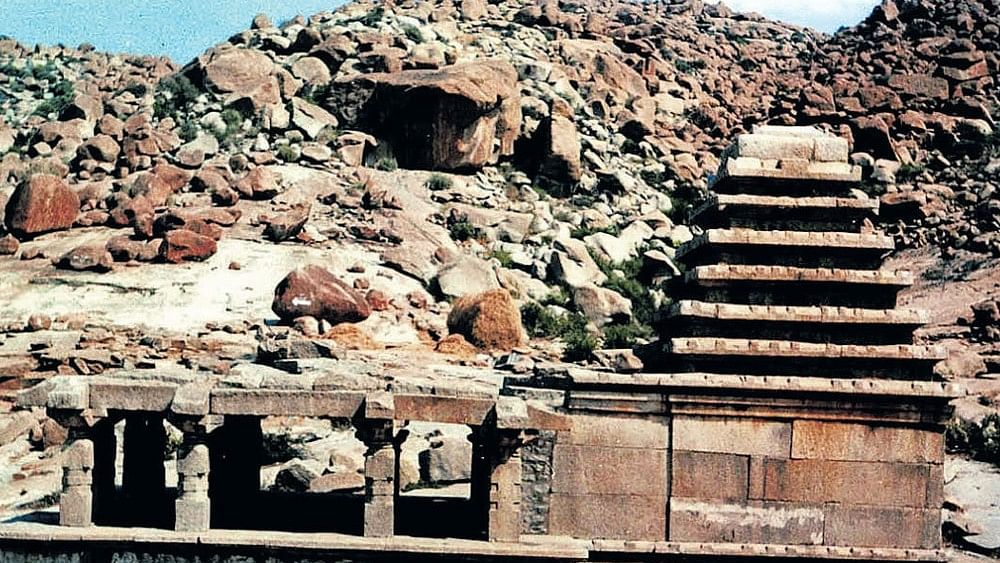
Representative image of an archaeological site.
Credit: DH File Photo
Chennai: Tamil Nadu State Department of Archaeology (TNSDA) has sought permission from the Union Government to continue excavations in four existing sites, including the Sangam Era’s Keeladi, and launch fresh digging in four new locations as part of its efforts to trace the ancient history of the modern-day Tamil Nadu and its people.
The applications have been submitted to the Central Advisory Board for Archaeology (CABA) for permission, which is likely to be granted this month.
The new sites where TNSDA has sought permission to conduct excavations are Chennanur in Krishnagiri district, Thirumalpuram (Tenkasi), Kongalnagaram (Tiruppur), and Marungur (Cuddalore).
The existing sites where nod has been sought to continue the excavations are Keeladi, the Sangam Era site which is dated to be at least 2,600 years old with a thriving industrialised settlement on the banks of River Vaigai, Kilnamandi (Tiruvannamalai), Vembakottai (Virudhunagar), and Porpanaikottai (Pudukkottai).
While the archaeological excavation will enter the 10th phase in Keeladi, it will be the third phase in Vembakottai, and second phase in Kilnamandi, and Porpanaikottai.
“We are making a consistent effort to dig into the past lives of Tamils and as part of this effort, we have sought permission to conduct excavations in eight places for the year 2023-2024. We are awaiting permission from CABA,” K Manivasan, Additional Chief Secretary (Tourism and Culture), said.
He was speaking after inaugurating a five-day conference on History, Science, and Technology of South Asian Ceramics organised by the TNSDA in commemoration of noted epigraphist Iravatham Mahadevan.
Manivasan said the state government will explore the possibility of setting up a well-documented and well-curated museum to display ceramics from various parts of the state.
The excavations are usually carried out from February to September after which work on report writing begins. Officials said archaeologists will look for evidence of high tin bronze in Thirumalpuram, Iron Age in Marungur, and Neolithic Period in Chennanur.
The state had conducted digging in eight places in 2022-2023 during which nearly 10,000 antiquities, including terracotta figurines, glass beads, carnelian beads, iron tools, a tiger miniature made in bronze, gold, and punch-mark coins, were unearthed.
One of the significant findings last year was the discovery of 2,030 graffiti marks, including four with Tamil-Brahmi inscriptions, from Thulukarpatti in Tirunelveli district. This assumes importance with the state government embarking on a comparative study of the graffiti marks, potsherds, and the Indus Valley Civilisation (IVC) signs.
In Kilnamandi, a Megalithic Age site in Tiruvannamalai district, archaeologists excavated 12 burials which are primarily of two types -- cist burial with sarcophagus and pit burial. In total, 21 sarcophagusa sarcophagus — a coffin of terracotta, adorned with capstones, sculptures and inscription – have been recovered.
These findings come amidst repeated assertions by Chief Minister M K Stalin that his government will take every step to scientifically prove that India’s history will have to be rewritten from the Tamil landscape, in the light of findings in Keeladi and Sivakalai.
The archaeological excavations in Tamil Nadu have created a buzz in the past few years as they threw up surprises – artefacts unearthed in Keeladi near Madurai pushed the Sangam Era to 600 BCE from 300 BCE, rice husks found in a burial urn in Sivakalai was found to be 3,200 years old, and that Tamils were aware of the iron technology in 2172 BCE, 4,200 years ago.
The carbon dating has pushed the Sangam Era by three hundred years that it was thought to be – the ASI, which conducted the first two phases of excavation, also derived the period of the Sangam-era archaeological site to be between 8th century BCE to 3rd century CE.